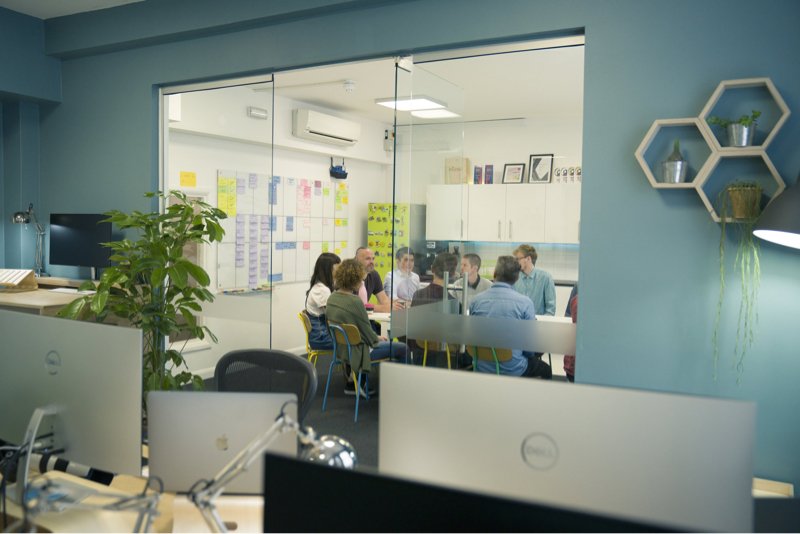Raising awareness of mental health in the workplace

In recent times the conversation surrounding mental health has shifted from being a topic of stigma to being regarded as something as important as physical health. Obviously, this resembles huge progress however, the technology sector still has a long way to go in order to tackle this epidemic.
A 2019 study, conducted by the British Interactive Media Association found that two-thirds of people working in the technology industry reported that they were stressed by their work. Over half of the participants also reported having suffered from depression or anxiety at some point. The study concludes that people who work in the tech sector are five times more depressed than the general population of the UK.
These numbers are horrifying, something is very clearly wrong.

Boys Don’t Cry
It’s no secret that there is a heavy male bias in the technology sector (a separate problem that definitely deserves a blog post of its own). Statistically, men struggle to communicate their feelings effectively. The leading cause of death in men under the age of 45 is unfortunately suicide. For generations, men have been encouraged to “man-up” and not talk about their feelings, as the evidence shows this is problematic. This perhaps has an effect on the technology sector. How Not to be a Boy is a fantastic autobiographical take on this problem written by Robert Webb. Webb discusses the gender conditioning that men have ingrained into them from an early age. This perhaps gives an insight into this issue. It is well worth reading.

Impostor Syndrome
Impostor syndrome is a psychological pattern where an individual doubts their accomplishments to get where they are. Impostor syndrome is abundant within the sector, especially with new recruits. A 2019 survey conducted by The Hub Events found that 85% of people with less than 3 three years of experience have experienced this phenomenon. This syndrome can also lead to anxiety and depression.
So What Can Be Done?
Solving the problem of mental health will require a significant shift in the industry however, there are several things that we can do both as individuals and as companies.
As an individual:
Mood tracking at work
In doing this you will be able to identify patterns that cause different moods or trigger anxiety, for example skipping breakfast or the weather being more bleak than usual. There are several apps that will allow you to do this however I use Moodistory, a paid app that allows you to do this easily.

Ask for help
There are people you can talk to in order to empty your mind. Be it a colleague, a friend or a family member, there will always be someone to talk to. In a worst case scenario, there are organisations who have been trained to listen to you such as the Samaritans (you can call them on 116 123). Do not bottle up emotions nor employ the traditional British “stiff upper lip” mentality. Refer back to How Not to be a Boy.
At Brightec we are great at this, ensuring all our staff know they have someone to speak with through our commitment to coaching.
Therapy
Therapy sessions are actually extremely powerful. The ability to talk to someone completely selfishly and judgement-free enables the individual to be more open and thus hopefully understand the root cause of their issue. I am a big advocate for therapy. You can use this site to find a local therapist.
As a company:
Implement the 6 standards for supporting employees mental health, issued by an independent government review (Mind Thrive). They are:
- Produce, implement and communicate a mental health at work plan that encourages and promotes good mental health of all staff and an open organisational culture.
- Develop mental health awareness among employees by making information, tools and support accessible.
- Encourage open conversations about mental health and the support available when employees are struggling, during the recruitment process and at regular intervals throughout employment, with appropriate workplace adjustments offered to employees who require them.
- Provide your employees with good working conditions and ensure they have a healthy work/life balance and opportunities for development.
- Promote effective people management to ensure all employees have a regular conversation about their health and wellbeing with their line manager, supervisor or organisational leader and train and support line managers with effective management practices.
- Routinely monitor employee mental health and wellbeing by understanding available data, talking to employees, and understanding risk factors.
As mentioned earlier, Brightec pride ourselves on our coaching programme. We’ve written about coaching in the past but it is extremely relevant when talking about this topic. Once a month you and your coach will step out of the office and talk about how you are coping both in and out of work. We’ve found that this creates an opportunity for people to talk openly about how they are feeling without the pressures of the office. It is also a place where meaningful relationships and support networks are formed.
It’s time to sort this problem out. We’d love to know what you’re doing in your workplace to support each other, and if there are ways we can improve our efforts further.
You might also like...
Josh's blog post on how Brightec won an award for happiness in the workplace.
We put a great deal of time and resource into ensuring our staff are happy and supported at work. Read more about our ethos towards wellbeing here.
Looking for something else?
Search over 450 blog posts from our team
Want to hear more?
Subscribe to our monthly digest of blogs to stay in the loop and come with us on our journey to make things better!
